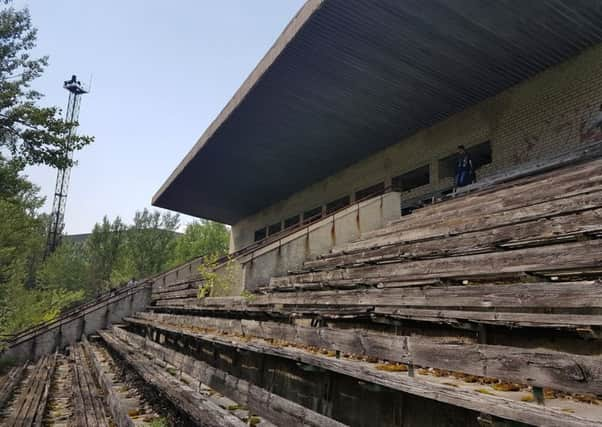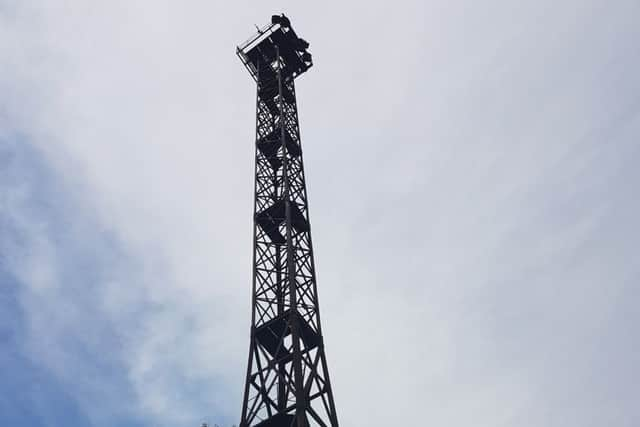Richard Sutcliffe – A stadium too far on visit to Chernobyl disaster zone


Be it Elland Road, which once boasted the tallest in the Football League at 250ft, or the six pylons that made Boothferry Park unique, there was something reassuring as a youngster about that maiden sighting of those gleaming towers in the distance.
In time, the installation of lighting in the stand roof – a practice accelerated by the building of new, often identikit, stadia in the early Nineties – took away not only that sense of thrill but also an invaluable homing tool for travelling fans unfamiliar with a town or city.
Advertisement
Hide AdAdvertisement
Hide AdI was minded of this largely lost practice during a summer break that included a day trip to Chernobyl.


Granted, the scene of the most catastrophic nuclear accident in history may not be most folk’s idea of a holiday destination.
But, having long been fascinated by the 1986 explosion and its aftermath, a mini-break to Belarus and Ukraine could not be allowed to pass without making the two-hour trek from Kiev to the shared border of these two old Eastern Bloc countries.
Once there – and having been equipped with a Geiger counter to go with the special visa required to pass the military checkpoint into the 30km exclusion zone – our party set about exploring the area, culminating in a visit to the abandoned city of Pripyat.
Advertisement
Hide AdAdvertisement
Hide AdWith its crumbling apartment blocks, decaying fairground and school full of books covered in radioactive dust, what was once home to 50,000 people is not an altogether easy visit.
The sense of loss felt by those who lived in one of the Soviet Union’s model cities – conditions here were considered vastly superior to elsewhere – is obvious.
What June’s visit did do, though, was reunite yours truly with a sight that used to gladden the hearts of football supporters everywhere.
We had just left behind the derelict ferris wheel and dodgem cars when, suddenly, a familiar sight could be seen poking above the trees. A floodlight pylon.
Advertisement
Hide AdAdvertisement
Hide AdAs the pace quickened and the vegetation finally started to clear, there stood what had clearly once been the grandstand of a football stadium.
The wooden benches were splintered and covered in moss. But there was the tunnel, directly below what looked like the press box.
Further exploration would reveal a terrace and turnstile block, both losing the fight with Mother Nature. Likewise, the pitch was now filled with the huge 30ft trees through which the one remaining floodlight had first been spotted by our group.
I am not sure why but the presence of a football ground in Pripyat came as a surprise. Sure, I had listened intently as our guide explained how a city opened in 1970 to house the workers from the nearby power plant and their families had boasted an average age of just 26. A fifth of the population were also under 18.
Advertisement
Hide AdAdvertisement
Hide AdI had seen the huge swimming pool, leisure centre and boating lake during our 90-minute walking tour. Then there had been the main square’s Palace of Culture, which housed a variety of sports, including boxing and basketball along with a cinema and theatre. Stadium Avanhard, however, was wholly unexpected.
Peering out from the back row of the main stand, it was easy to imagine what watching football here had been like for the locals. Misguidedly easy, in fact, with the 5,000-capacity stadium never having hosted a match.
Dynamo Kiev had been scheduled to open the newly-built venue on May 1, 1986, with an exhibition game against FC Stroitel Pripyat.
By then, though, the city had been evacuated as the scale of the disaster – and attempted cover-up by the Kremlin – became clear to the rest of the world.
Advertisement
Hide AdAdvertisement
Hide AdAll these years on, debate continues to rage as to whether Chernobyl, as former General Secretary Mikhail Gorbachev later suggested, proved to be the tipping point towards the collapse of the Soviet Union.
Regardless, Stadium Avanhard and the rest of Pripyat stands as a reminder that this was very much a disaster about people and not ideology.